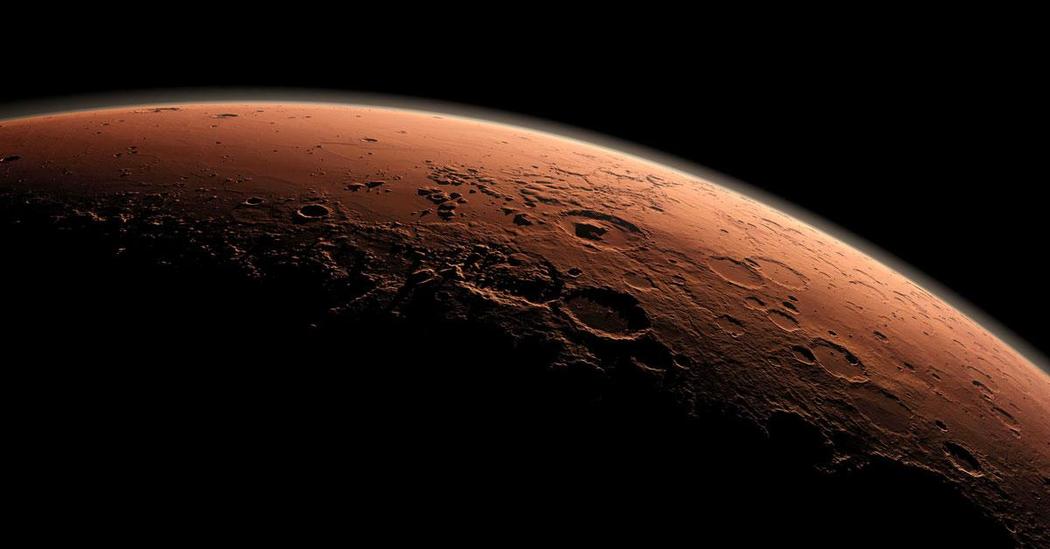Mars is within reach!
A world with a surface area the size of the combined continents of the Earth, the Red Planet contains all the elements needed to support life. As such it is the Rosetta Stone for revealing whether the phenomenon of life is something unique to the Earth, or prevalent in the universe. The exploration of Mars may also tell us whether life on Earth is the model for life elsewhere or whether we are just a small part of a much vaster and more varied tapestry. Moreover, as the nearest planet with all the required resources for technological civilization, Mars will be the decisive trial that will determine whether humanity can expand from its globe of origin to enjoy the open frontiers and unlimited prospects available to multi-planet space-faring species. Offering profound enlightenment to our science, inspiration and purpose to our youth, and a potentially unbounded future for our posterity, the challenge of Mars is one that we must embrace.
Indeed, with so much at stake, Mars is a test for us. It asks us if we will continue to be a society of pioneers, people who dare great things to open untrodden paths for the future. It asks whether we will be people whose deeds are celebrated in newspapers or in museums, whether we will continue opening new possibilities for our descendants or become less than those who tackled the unknown to give us everything we have.
Mars is the great challenge of our time!
In order to help develop key knowledge needed to prepare for human
Mars exploration, and to inspire the public by making sensuous the
vision of human exploration of Mars, the Mars Society initiated the
Mars Analog Research Station (MARS) project. A global program of Mars
exploration operations research, the MARS project includes two Mars
base-like habitats located in deserts in the Canadian Arctic and the
American Southwest. In these Mars-like environments, we have launched
a program of extensive long-duration field exploration operations
conducted in the same style and under many of the same constraints as
they would on the Red Planet. By doing so, we began the process of
learning how to explore on Mars.
The Mars Desert Research Station (MDRS) is a laboratory for learning
how to live and work on another planet. It is a prototype of a habitat
that will land humans on Mars and serve as their main base for months
of exploration in the harsh Martian environment. Such a habitat
represents a key element in current human Mars mission planning. MDRS
serves as a field base to teams of six to seven crew members:
geologists, astrobiologists, engineers, mechanics, physicians, human
factors researchers, artists, and others, who live for weeks to months
at a time in relative isolation in a Mars analog environment. Mars
analogs are defined as locations on Earth where some environmental
conditions, geologic features, biological attributes or combinations
thereof may approximate in some specific way those thought to be
encountered on Mars, either at present or earlier in that planet’s
history. Studying such sites leads to new insights into the nature and
evolution of Mars, the Earth, and life.
However, in addition to providing scientific insight into our
neighboring world, such analog environments offer unprecedented
opportunities to carry out Mars analog field research in a variety of
key scientific and engineering disciplines that will help prepare
humans for the exploration of that planet. Such research is vitally
necessary. For example, it is one thing to walk around a factory test
area in a new spacesuit prototype and show that a wearer can pick up a
wrench – it is entirely another to subject that same suit to two
months of real field work. Similarly, psychological studies of human
factors issues, including isolation and habitat architecture are also
only useful if the crew being studied is attempting to do real work.
Furthermore, when considering the effectiveness of a human mission to
Mars as a whole, it is clear that there is an operations design
problem of considerable complexity to be solved. Such a mission will
involve diverse players with different capabilities, strengths and
weaknesses. They include include the crew of the Mars habitat,
pedestrian astronauts outside, astronauts on un-pressurized but highly
nimble light vehicles operating at moderate distances from the
habitat, astronauts operating a great distances from the habitat using
clumsy but long-endurance vehicles such as pressurized rovers, mission
support on Earth, the terrestrial scientific community at large,
robots, and others. Taking these different assets and making them work
in symphony to achieve the maximum possible exploration effect will
require developing an art of combined operations for Mars missions.
MDRS, in operation for almost two decades, was the pioneer station
that began the critical task of developing this art.


